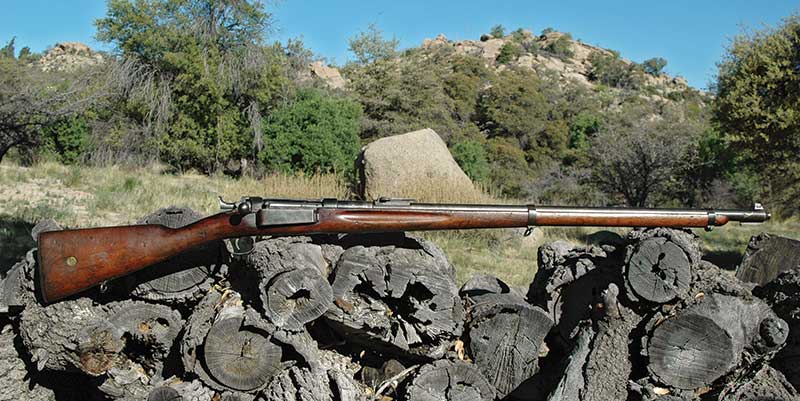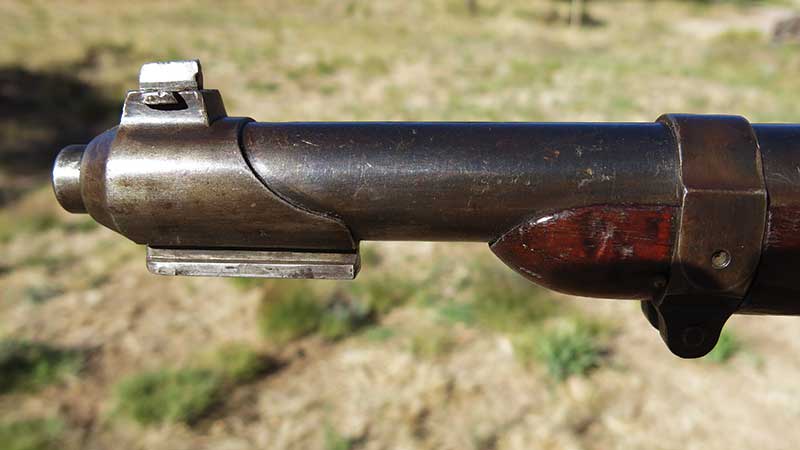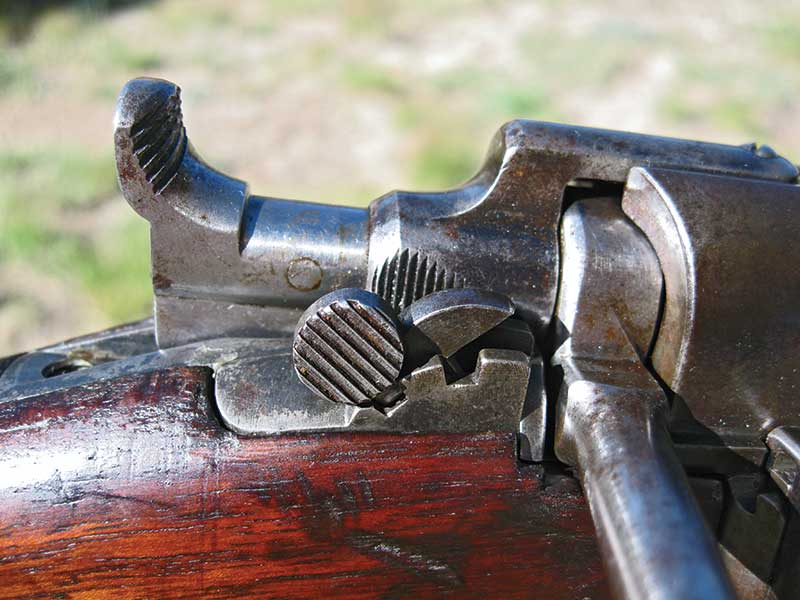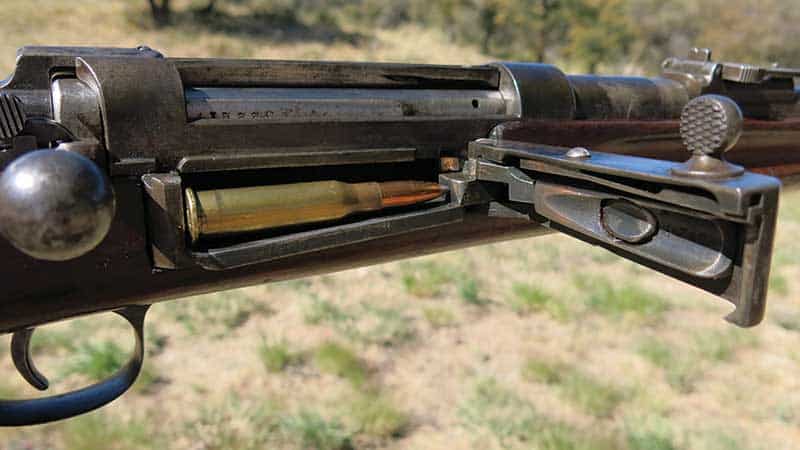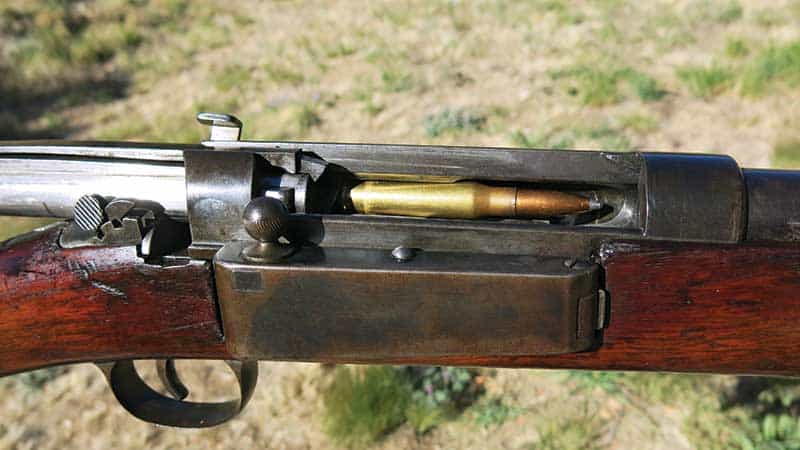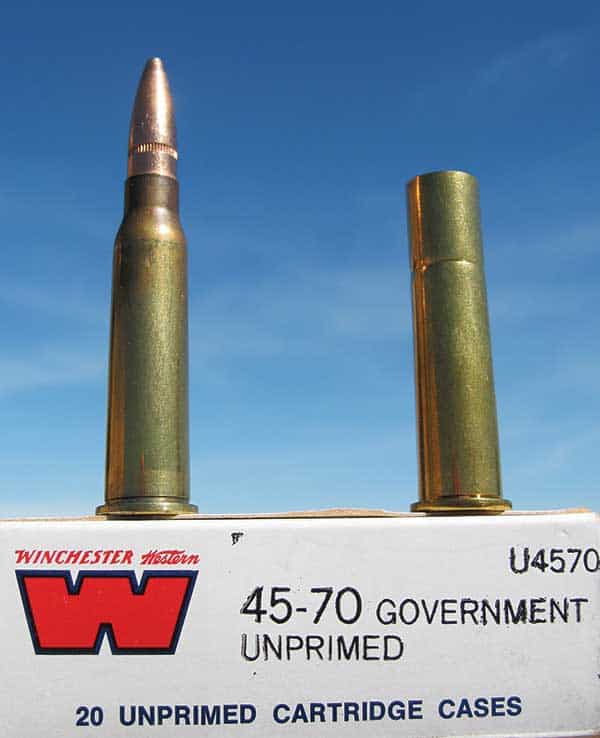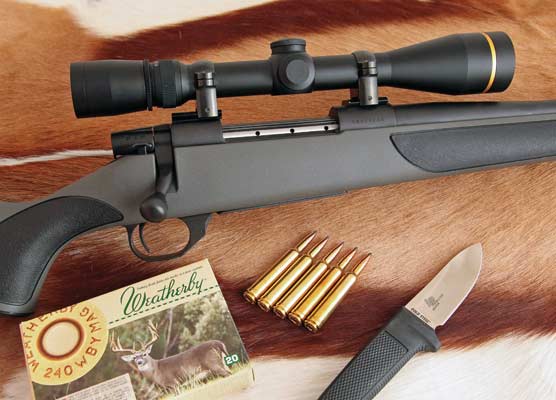The First Krag-Jorgensen
The Danish 8x58R
You can invent a great military firearm, but it may not be adopted by your Mother Country. In the case of James Paris Lee, his greatest design, the Lee-Metford/Lee-Enfield, would never be embraced by his adopted country. In the case of the Krag-Jorgensen rifle, it was adopted by another country first, making it one of the more interesting stories in firearms history.
The Krag-Jorgensen was designed by two Norwegians—Captain Ole Hermann Johannes Krag, director of the Royal Manufactory of Arms at Kongsberg, and Erik Jorgensen, a private gunsmith before becoming associated with the Kongsberg Arsenal. Yet, their advanced design was adopted first not by Norway but by the Danes of Denmark in 1889. The Danish Krag-Jorgensen, chambered for the vintage-looking 8x58mm rimmed cartridge, soldiered on for 56 years in Denmark, until it was replaced by the US M1 rifle at the conclusion of WWII.
While US-made Krags are common, you can wander around gun shows for years or cruise the internet auction sites for months without coming across a Danish or a Norwegian Krag-Jorgensen. They’re just not that common on our shores. ’Tis a pity because the Danish model exhibits some distinctive design features not found in other Krag-Jorgensen models, while the Norwegian model is chambered for the cult-driven 6.5×55 cartridge.
The Krags have always enjoyed a great following, and for years were the premier military rifles for sporting conversions in the United States. Tens of thousands of 30-inch-barreled rifles were chopped down into 22- and 24-inch-barreled sporters. US Krags were transformed into everything from slick one-shot varmint rifles in .22 Hornet, .219 Zipper and .25 Krag-Neidner to brush-busting .35 Winchesters.
I can only remember stumbling across one sporterized Norwegian Krag in 6.5×55, but not a single sporterized Danish Krag. Yet I recently cruised the Internet for Danish Krags, and there it was—a very unique specimen converted into a sporter in .45-70 caliber by Robert J. Snapp, who did the metalwork, and the late Richard Smith, who handled the stocking. The Danish sporter was done up in the fashion of a big-bore “Express” rifle with a quarter rib and a Griffin & Howe patterned stock. And the price for this one-of-a-kind M1889 Danish sporter? Hold your hat—$7,995! I would love to know who commissioned it and why.
Why it was re-barreled in .45-70 is an easier question to answer. To make an 8x58R case, you begin with a .45-70 case, anneal the upper 1/3rd of the brass and then resize it in an 8x58R set of dies currently made by the CH4D Custom Die Company. After trimming, the finished product is a perfect 8x58R case. The only fine-tuning sometimes needed is to adjust headspace by reducing the thickness of the rim. The rim thickness of Danish military ammunition measures 0.058-inch and current W/W .45-70 brass runs about 0.063. Buffalo Arms Co. offers preformed 8x58R brass with different rim thicknesses so that’s the way to go. Buffalo Arms will sell you one or two of each to try, or have a gunsmith check it for you.
Unfortunately, the bore of the Danish Krag in this article is too corroded to shoot. If you do find a shooter, I would recommend light loads of either 13.0 grains of Red Dot or 17.0 grains of IMR 4759 with the cheapest 8mm (0.323-inch) bullets you can find. Don’t hot rod these old guns.
Entering the service as it did in the transitional period between black powder and smokeless, the 1889 Danish Krag is a musket-sized arm measuring 52 inches in overall length, weighing 9.5 pounds. Several distinctive features of the M1889 set it apart from the US and Norwegian models.
Like the German Model 1888 Commission rifle, the Danish Krag features a full barrel jacket serving as a handguard. The barrel jacket was an expensive touch, but it protected the barrel from stock warping, minimized any change in zero when the bayonet was fixed and possibly improved accuracy since the barrel was fully suspended between two contact points—the receiver and the end of the barrel jacket.
The large, upswept thumb piece at the end of the cocking piece is very distinctive, permitting the trooper to re-cock his Krag without opening the action. Unlike the US and Norwegian models, the magazine loading door of the Danish M1889 swings forward rather than down to load or top off the magazine.
As originally introduced, the safety of the M1889 was simply a 1/2-cock notch on the cocking piece. In 1910, the M1889’s were refitted with a rocking safety at the right rear of the receiver, and a new 2,000-meter sight ladder calibrated to higher velocity round featuring a 196-grain spitzer loaded to approximately 2,360 fps. This retrofitted model is sometimes referred to as the M1889/10.
Conforming to the infantry tactics of the era, the M1889 is fitted with a cartridge cut-off, permitting single-shot loading of the action. Soldiers were trained to shoot in the single-shot mode until the order, “Shoot from the magazine,” was received. In the down position, the M1889 cut-off is engaged. In the up position, you can “Shoot from the magazine.”
The Danish Krag exhibits the same, silky smooth action we associate with the US Krag. While the Krag bolt has only one locking lug, it’s amply strong for the working pressures of the original military cartridges. If you carefully examine the Krag bolt, there are two supplementary locking shoulders—one formed by the rear of the bolt guide, the front of the rear receiver bridge and the other by the root of the bolt handle closing down into a notch in the receiver.
Following the introduction of the M1889, Denmark fielded a family of Krag models with lighter-weight 22-inch barrels, and some with turned-down bolt handles. The models are designated by year of adoption and include the M1889/13 Calvary Rifle, M1889/17 Engineer Carbine, M1889/23 Cavalry Carbine, M1889/24 Artillery Carbine, M1889/24 Infantry Carbine and, in 1928, a Marksman’s or Sniper’s Rifle with a heavy, free-floated barrel, mounted with an aperture rear sight and globe front sight.
Whether it be Danish, Norwegian or American, the Krag-Jorgensen is a stunning military collectible. Keep your eye out for one, especially those Danes and Norwegians.
